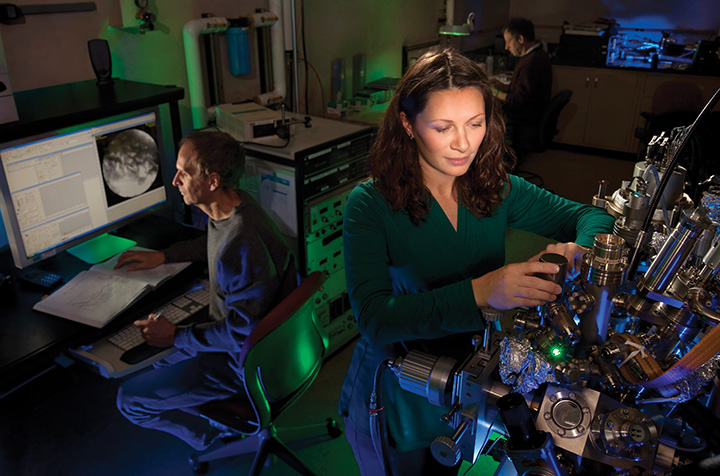Electrical engineers at Sandia design and develop advanced instrumentation systems for in-flight weapons system evaluations and other applications.
Sandia creates innovative, science-based, systems-engineering solutions to our nation’s most challenging national security problems. Sandia electrical engineers are an integral part of multidisciplinary teams tasked with defining requirements, creating system designs, implementing design methodologies, building prototypes, ground-testing the systems, and supporting the full-up system tests.
Electrical engineers participate in all aspects of the analysis, design, testing, and integration of complex systems. For example, Sandia electrical engineers are applying advanced miniaturization packaging techniques to develop highly reliable, state-of-the-art electronic subsystems that can operate on ultralow power and withstand extreme environments. Other electrical engineers are conducting research and development for advanced micro-electromechanical systems that push the technology envelope for national-security applications. Still others are developing high-performing RF transmitters, receivers, and digital signal processors.
The wide variety of projects available to electrical engineers at Sandia means that there are always new opportunities and there is never room for boredom. No wonder that Sandia has been called the “engineering playground of American Big Science.”
Key areas for electrical engineers at Sandia
- Mixed-mode ASIC design
- Programmable logic arrays
- Communication, control, and data acquisition systems
- Modeling and simulation of electrical systems
- RF communications and digital signal processing
- Radar system and high-speed digital design
- Microsystem components (MEMS/LIGA)
- Semiconductor fabrication
- Telemetry systems
